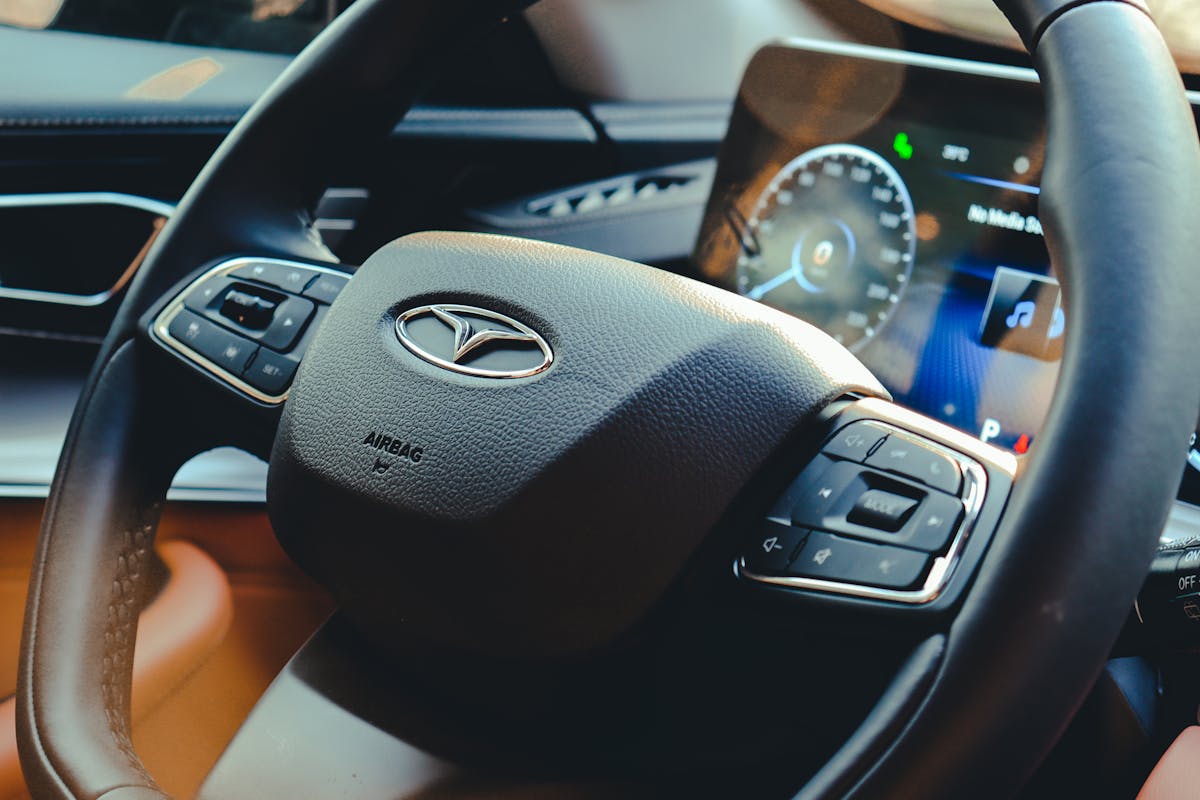In the domain of sports cars and luxury vehicles, the delicate balance between performance and safety is constantly being redefined. With high-speed accidents posing considerable risks, manufacturers are increasingly prioritizing safety-focused design changes. These range from the incorporation of advanced materials to the development of active safety technologies and aerodynamic improvements. The question remains, however: how will these changes continue to evolve, and what impact will they ultimately have on the future of the auto industry?
The Impact of High-Speed Accidents
In the domain of high-speed sports and luxury cars, the impact of high-speed accidents is a topic that can’t be ignored. High-speed impact can cause devastating damage, leading to severe injuries or even fatalities. This risk is particularly pertinent in the arena of sports and luxury vehicles, given their inherent emphasis on speed and performance.
According to recent accident statistics, high-speed collisions account for a significant proportion of lethal accidents. These statistics underscore the grave consequences of high-speed impact, reinforcing the necessity for considerable focus on vehicle design and safety features. The design of these high-performance vehicles, from their structural integrity to crash energy management, plays a critical role in mitigating the effects of high-speed impact.
However, the challenge lies in balancing the quest for speed and performance with the imperative for safety. The integration of advanced materials, aerodynamic design principles, and innovative technology can contribute to reducing the impact of high-speed collisions. Nevertheless, these strategies must be continually evaluated and refined in response to emerging accident statistics to guarantee the ongoing safety of drivers and passengers in the world of high-speed sports and luxury cars.
Evolution in Vehicle Safety Measures
Building on the previously highlighted concerns, the evolution in vehicle safety measures has been a monumental stride in the automobile industry. The advent of crash testing, in particular, has played a critical role in improving car safety. Crash testing involves a series of controlled, simulated accidents using dummies to evaluate the impact on the human body. This empirical evidence provides valuable insights for designers, resulting in the construction of safer vehicles.
Regulatory standards have also greatly influenced the transformation of vehicle safety. These standards, set by government bodies worldwide, enforce specific safety requirements that all vehicles must achieve. They cover a wide range of safety aspects, from the strength of seat belts to the ability of a car to withstand a rollover. Such stringent benchmarks compel manufacturers to continuously innovate and prioritize safety in design.
The symbiotic relationship between crash testing and regulatory standards has therefore facilitated a significant evolution in vehicle safety measures. This ongoing evolution is an essential component in the broader strategy to reduce the devastation caused by high-speed accidents, particularly in sports cars and luxury vehicles. It is a reflection of the automobile industry’s commitment to preserving life and enhancing the driving experience.
Role of Technology in Car Design
The advent of technology has greatly reshaped the design of sports cars and luxury vehicles, primarily in the arenas of safety features and design technologies. Innovative safety features, powered by advanced algorithms and sensors, have transformed vehicle safety, enhancing proactive risk management and mitigation. Equally, advanced design technologies have enabled the creation of aesthetically pleasing yet functional vehicles, optimizing aerodynamics, fuel efficiency, and user comfort.
Innovative Safety Features
A myriad of innovative safety features, propelled by technological advancements, has markedly altered the landscape of car design in sports cars and luxury vehicles. These features, often determined through rigorous crash testing, have not only enhanced the safety ratings of these vehicles, but also dramatically reshaped their design aesthetics.
Crash testing has become an essential tool in the design process, providing invaluable data to shape the incorporation of safety features. This data-driven approach has led to the development of features like active safety systems, which use sensors and software to predict and prevent accidents. For instance, autonomous emergency braking and lane-keeping assist are now standard in many sports cars and luxury vehicles.
Safety ratings, in turn, have become a significant determinant in the consumer decision-making process. Consequently, manufacturers have a vested interest in improving these ratings, driving innovation in safety features. From airbags that deploy in milliseconds to crumple zones designed to absorb impact, these features not only raise safety ratings but also epitomize the intersection of technology and design.

Advanced Design Technologies
With the advancement of technology, car design in sports cars and luxury vehicles has undergone a dramatic evolution. It has not only enhanced the aesthetic appeal but also markedly improved the safety measures. In the wake of high-speed accidents, the advent of smart materials and adaptive technologies has emerged as a game-changer.
Smart materials, such as shape-memory alloys and piezoelectric materials, have revolutionized car design. These materials can change their properties, shape, or size in response to external stimuli, like temperature or electric field. This has led to the creation of self-healing car bodies that repair themselves after minor damages, reducing the risks associated with high-speed collisions.
Adaptive technologies, on the other hand, have empowered vehicles to adjust their operations dynamically to changing conditions. This includes adaptive cruise control, adaptive light control, and adaptive suspension system. Such technologies help maintain the stability of the vehicle at high speeds, thereby minimizing the risk of accidents.
Aerodynamics and Accident Prevention
In our exploration of design changes in sports cars and luxury vehicles, we must not overlook the essential role of aerodynamics in accident prevention. The science of aerodynamics, which primarily deals with the motion of air and how it interacts with solid objects, has become a significant tool in designing safer vehicles.
Manufacturers have been integrating aerodynamic enhancements into their designs to improve stability and control at high speeds. These enhancements, such as underbody panels and rear diffusers, reduce air drag and lift, leading to improved handling, which is fundamental in preventing accidents. Importantly, aerodynamic efficiency also contributes to increased fuel economy, an added benefit for consumers.
The use of crash simulations in the design process has grown exponentially. These simulations enable engineers to predict and study the behavior of vehicles under various crash scenarios. By understanding the potential impact forces and how a vehicle’s structure might deform, designers can implement measures to mitigate harm.
Innovation in Braking Systems
In evaluating the design changes in sports cars and luxury vehicles, the innovation in braking systems is a significant aspect to take into account. Technological advancements have revolutionized anti-lock braking systems, enhancing their efficiency and reliability. Additionally, the emergence of regenerative braking has marked a new era, not only improving safety but also contributing to energy efficiency and sustainability.
Advancements in Anti-lock Brakes
Notable strides have been made in the domain of car safety, particularly in the area of braking systems. Anti-lock technology, in particular, has undergone considerable advancements, improving braking performance and greatly reducing the risk of accidents at high speeds.
Anti-lock Brake Systems (ABS) were developed to prevent wheels from locking during heavy braking, enabling drivers to maintain steering control. This technology has evolved tremendously over the years, becoming more sophisticated and reliable. Early ABS were rudimentary, only offering basic functionality. However, through extensive research and development, modern systems have become more refined, providing enhanced stability and responsiveness, even under adverse driving conditions.
As a result of these advancements, ABS now contribute greatly to the overall braking performance of modern sports cars and luxury vehicles. They provide better control during braking, reducing skidding and improving vehicle handling. Additionally, they have been instrumental in reducing serious accidents caused by loss of control during high-speed braking.
Nevertheless, while the evolution of anti-lock technology has greatly improved safety, it’s paramount to remember that it complements, rather than replaces, safe and responsible driving. Continued innovation in this sector promises further enhancements in vehicle safety and performance.
Emergence of Regenerative Braking
Pushing the boundaries of innovation, the automotive industry has introduced regenerative braking systems in sports cars and luxury vehicles. Unlike traditional braking systems that dissipate kinetic energy as heat, regenerative braking harnesses this energy, converting it into electrical energy or ‘regenerative energy’ that can be stored for later use.
This remarkable adaptation has revolutionized braking efficiency, considerably reducing the wear and tear on braking systems and improving energy conservation. When a vehicle equipped with regenerative braking decelerates, the electric motor operates in reverse, acting as a generator to slow the vehicle down while transforming the kinetic energy into electricity. This electricity is then fed back into the battery, extending its charge and the vehicle’s range.
Furthermore, this technology has been particularly beneficial in the context of high-speed accidents. With regenerative braking, sports cars and luxury vehicles can now achieve faster deceleration rates, reducing stopping distances and hence, the risk of accidents.
Evidently, the emergence of regenerative braking signifies a transformative shift in the automotive industry. By prioritizing sustainability and safety, these advancements set a new standard for vehicle performance, and portend an exciting future for automotive design.
Revolutionary Car Body Materials
Over the past few decades, the development of revolutionary car body materials has dramatically transformed the world of sports cars and luxury vehicles. These materials, including lightweight alloys and carbon fiber, have been instrumental in reducing the overall weight of vehicles, thereby enhancing their speed capabilities and fuel efficiency.
Carbon fiber, in particular, has become a game-changer, due to its high strength-to-weight ratio. It offers the rigidity and robustness of metals, while being considerably lighter. This material is now extensively used in crafting the exterior bodywork of high-performance vehicles, providing them with a unique blend of speed, agility, and resilience.
Lightweight alloys, on the other hand, have found their application in the creation of engine components and chassis structures. The use of such alloys, often made of aluminum or magnesium, has allowed manufacturers to maintain the structural integrity of vehicles, without compromising on their weight or performance.
These advancements in car body materials have not only shaped the aesthetics of sports cars and luxury vehicles, but they have also played a pivotal role in their ability to withstand high-speed accidents. The use of these materials has been a key factor in the ongoing evolution of vehicle design, marking a considerable shift in the industry’s approach to safety and performance.
The Influence of Racing on Safety
Building on the advancements in car body materials, the world of motor racing has had a profound influence on the safety features of sports cars and luxury vehicles. The high-speed thrill that racing provides has necessitated the development of stringent safety measures, driven by racing regulations and a focus on driver training.
Three significant impacts of racing on sports car safety design include:
- Improved braking systems: Racing has led to the development of superior braking technologies, like carbon-ceramic brake discs, which provide better heat dissipation and greater stopping power, thereby reducing the risk of high-speed accidents.
- Enhanced aerodynamics: Racing has influenced design changes aimed at improving vehicle stability and control at high speeds. The introduction of spoilers, diffusers, and body skirts, all contribute to improved safety by providing better road grip and minimizing the risk of rollovers.
- Advanced driver-assist systems: Racing has accelerated the development of systems such as Electronic Stability Control (ESC) and Traction Control System (TCS), which aid in maintaining vehicle control, especially under harsh driving conditions.
Consequently, racing has not only enhanced the performance attributes of sports cars but has also made them safer, thereby highlighting the symbiotic relationship between speed and safety.
Future Trends in Vehicle Safety Design
While the influence of racing on safety design has profoundly shaped current sports cars and luxury vehicles, the future holds even more promising trends in vehicle safety design. The advent of active safety technologies and predictive analytics, coupled with advancements in artificial intelligence, is set to revolutionize the industry.
Active safety refers to systems that help prevent accidents. These include technologies like forward-collision warnings, automatic emergency braking, and lane-keeping assist. Increasingly, these systems are becoming standard features in luxury vehicles and sports cars. They not only increase the safety of the occupants but also enhance the overall driving experience by making it less stressful and more comfortable.
Predictive analytics, on the other hand, uses data, statistical algorithms, and machine learning techniques to identify the likelihood of future outcomes based on historical data. In the context of vehicle safety, this can mean predicting potential accident scenarios and proactively deploying safety measures. For instance, if a vehicle’s analytics system predicts an imminent collision, it can automatically tighten seat belts, adjust seat positions, or even activate the brakes.
Thus, the fusion of active safety technologies and predictive analytics signifies a promising future for vehicle safety design, potentially making high-speed accidents a thing of the past.
Frequently Asked Questions
How Has Insurance Cost Changed With the Advancement in Car Safety Design?
Enhancements in car safety design have led to a reduction in insurance premiums. Innovative safety features lower accident rates, thereby reducing risk for insurers and consequently decreasing the cost of insurance for consumers.
What Is the Average Lifespan of Modern Sports Cars and Luxury Vehicles?
The average lifespan of modern sports cars and luxury vehicles, considering factors like sports car durability and luxury vehicle longevity, typically extends between eight to ten years, subject to maintenance, usage, and driving conditions.
How Does Regular Car Maintenance Contribute to Accident Prevention?
Regular car maintenance, including preventive measures and tire checks, greatly contributes to accident prevention. It guarantees peak vehicle performance, increases reliability, and reduces the risk of unexpected mechanical failures that can lead to dangerous situations.
How Has the Fuel Efficiency of Sports Cars and Luxury Vehicles Evolved?
Fuel technology enhancements and performance optimization have greatly improved the fuel efficiency of sports cars and luxury vehicles. This evolution has led to increased miles per gallon, lower emissions, and better overall performance on the road.
What Are the Environmental Impacts of Producing New Safety Materials for Cars?
The production of new safety materials for automobiles often involves environmental impacts. While sustainable materials can reduce these effects, production emissions remain a significant concern, contributing to air pollution and potential climate change.

